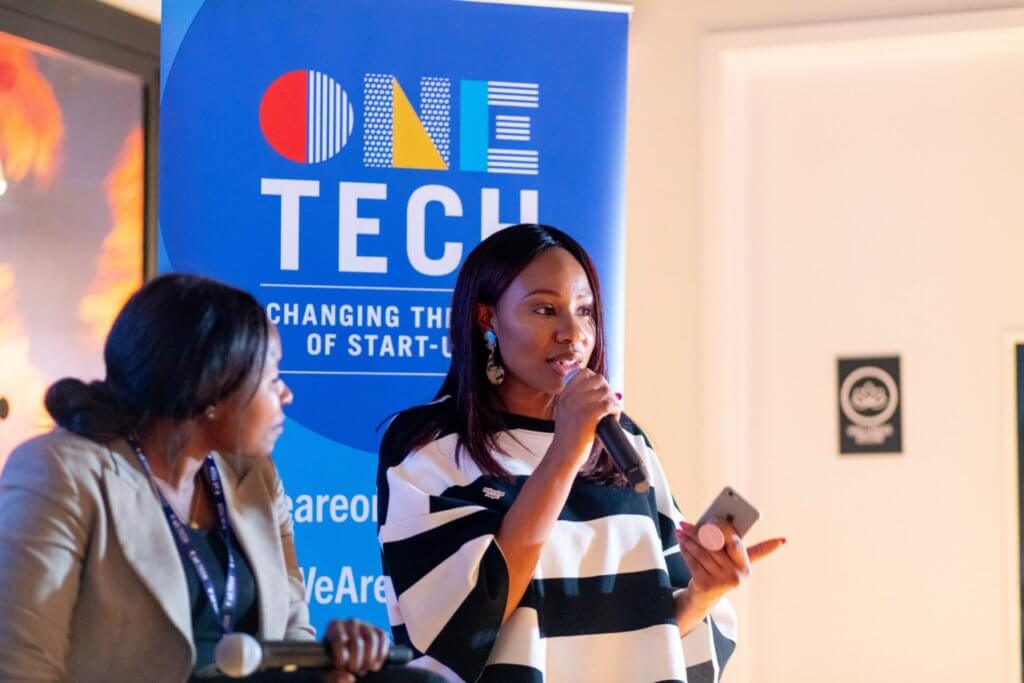Women in tech: If not now, when?
Eight solutions for cities to boost gender equality in tech
Why is the major lack of gender equality in tech an issue for Europe’s towns and cities? And what steps can municipalities consider in order to promote greater gender equality in tech? Answers and insights from URBACT Lead Expert Alison Partridge, founder of the OneTech start-up support scheme for underserved communities, and member of the URBACT TechPlace team.
What’s the problem?
The statistics when it comes to women in tech are shocking.
One of the best resources when trying to get a picture of gender (in)equality in European tech is the annual State of European Tech report by venture capital firm Atomico, which summarises findings from existing research and an extensive survey.
The statistics from 2020 make pretty depressing reading:
- When it came to the share of capital raised and the % of deals by founding team gender, the difference between men-only teams and mixed/women-only teams remains huge. Men-only teams captured 91% of all capital raised and 85% of all investments made in 2020.
- Only 16% of employees saw meaningful gender change in leadership teams over the previous year.
- When different respondent groups were asked about the kinds of discrimination they have faced, the split is very clearly distinguished. An overwhelming 87% of women are challenged by gender discrimination compared to 26% of men. Men more frequently experience discrimination pertaining to socio-economic status, nationality and ethnicity than their women counterparts.
Let’s just look at that top line again – that means that for every euro invested in tech companies in 2020, less than €0.10 went to teams that included a woman.
The issue is also acknowledged by the European institutions. When launching their Women TechEU pilot, the European Commission highlighted that only 15% of innovative start-ups are founded or co-founded by women, and a mere 6% have all-women founding teams. These women-led businesses raise less venture capital than their male-only counterparts, including vital early-stage investments, and the amounts that they raise tend to be lower. According to European Commission data, across Europe only around 5% of venture capital goes to mixed-gender teams and only 2% to all-female teams. This issue is also central to the URBACT Gendered Landscape Action Planning Network which has, for example, explored the issue of ‘Women in Innovation and Technology’ and what cities are doing to get more girls and women into STEM (more below).
If we look at the broader tech workforce, only 17% of ICT specialists are women, 34% of STEM graduates are women, and across the board women in the sector earn 19% less than men. The European Commission report Women active in the ICT sector states that including more women in the digital economy could create an annual GDP boost in the EU of EUR 9 billion.
Inequality in any sector is unacceptable. It is also bad for business as it means that a lot of talent is going to waste. This is a huge problem in an era where so many tech companies cite a lack of talent as a key barrier to progress. When it comes to talent, business simply cannot afford to miss out on half of the population.

Gender inequality is also bad in terms of how public services are designed and delivered. Not having equal representation in tech teams working within cities increases the likelihood of decisions being made about products and services which don’t account for the different sizes and shapes of our bodies or for our different behaviour patterns. A really good example – drawn from Caroline Criado Perez’s incredible book ‘Invisible Women’ – is that women are 17% more likely to die in car crashes than men. Only the passenger seat is commonly tested with a female crash-test dummy. The male crash-test dummy remains the standard dummy for the driver’s seat.
When code to be used in the delivery of public services is written or where products are conceived by gender imbalanced teams, how can we be sure that the software genuinely accounts for the different needs of men and women? Any programme that is designed with the needs and perspectives of just half the population in mind is likely to contain ‘built-in’ bias that can lead to faulty outcomes for the other half. A simple example might be a local recruitment tool which, unless it uses gender neutral data, might teach itself to prefer male candidates.
So, there is much to gain from more gender equality in tech.
What can cities do to support gender equality in tech?
Across Europe, city administrations and their stakeholders are grappling with this challenge. Of course, gender inequality is an issue in many other walks of life but the tech sector is particularly poor. Here are eight steps for cities to consider in order to support more gender equality in tech.
- Mentor and support female founders
Many municipalities across Europe offer some kind of business support to local businesses and/or start-up support to entrepreneurs, either directly or indirectly by funding external business support providers. In some cases, there are bespoke programmes which target female-led businesses. In every case the provision of additional mentoring and coaching can make a huge difference. Many women tech founders face a wide range of additional challenges related to perceived lack of legitimacy, lack of understanding of the problems they are trying to address (by male tech stakeholders), resource access, lack of contacts in the sector, and experience.
Women do not lack entrepreneurial ambition, competence or capability but many tend to face inequality both at home and in the workplace – gendered, socio-economic and structural. Local authorities can design and facilitate access to bespoke and mainstream enterprise support.
Below is a selection of organisations supporting female founders across the EU. These may offer a good starting point in terms of learning for municipalities interested in developing support programmes for female founders:
Some organisations working to address inequalities in tech (as listed by Sifted):
- 50inTech – France
- Czechitas – Czech Republic
- Female Founders – Austria
- OneTech – UK
- Fundright – The Netherlands
- Inklusiiv – Finland
- La French Tech Tremplin – France
- Portuguese Women in Tech – Portugal
- Rails Girls – Finland
- SheTech – Italy
- Station F Fighters Program – France
- Willa – France
- Women in Tech DK – Denmark
- #BcnTech4Women – Spain
2. Shine the light on female role models
All women, and particularly young women, benefit from strong role models who can inspire them to tread a different path to their parents’ generation. If you ask a group of young people to name a tech entrepreneur, they will most likely say Bill Gates, Jeff Bezos, Steve Jobs or Elon Musk. There is definitely a lack of high-profile female entrepreneurs, but they do exist in towns and cities across the EU. Young people, both male and female, need to hear about female success stories, ideally people who they can relate to and who are able to demonstrate that becoming a so-called ‘girl-boss’ is achievable. Two great European examples are Julia Bösch, the founder of Outfittery, one of Europe’s leading e-commerce start-ups, and Tania Boler, the co-founder of Elvie whose products include the world’s first silent wearable breast pump. There are also some great local stories from our London-based programme OneTech.

- Promote STEM teaching / coding clubs in schools
The lack of girls going into STEM subjects at school and university is a structural problem, but surely we can’t wait a generation or more for this to change. The school curriculum is normally fully dedicated to other priority topics, and cities themselves have little or no ability to influence it. However, there are often possibilities to hack the curriculum e.g., by putting on extra-curricular activities – coding clubs or ‘lunch and learns’ for example – which target girls and provide strong female role models in STEM jobs. Even short interventions can make a big difference. An example from Latvia, LearnIT.lv, which was featured in the URBACT TechTown Action Planning Network, found that after a two-hour workshop, girls’ interest in studying coding switched from 2% to 13%.

Other URBACT examples were featured in the Gendered Landscape workshop ‘Smart cities attract women into STEM sectors’, where Maria Sangiuliano, research director and CEO of Smart Venice and team member of the#Gender4STEM project, for example,showed a Teaching assistant platform and self-assessment tool which aims to make it easier to attract girls to STEM studies.
- Challenge ‘geeky’ stereotype – representation matters
Linked to the above, cities can review the way that they talk about STEM occupations. Imagery, language, messaging and representation make a big difference when people are accessing city information. Across all communications material, whether online or offline, it is important that cities show girls and women, of all ages and ethnicities, engaging in tech related tasks. By doing so, cities have an opportunity to challenge the stereotype of the ‘tech geek’.
5. Collect and share disaggregated diversity data
According to the European Institute for Gender Equality (EIGE), “gender statistics rely on these sex-disaggregated data and reflect the realities of the lives of women and men and policy issues relating to gender”. At city level, data therefore needs to be both collected and tabulated separately for women and men.
EIGI, on their website, state, “They allow for the measurement of differences between women and men on various social and economic dimensions and are one of the requirements in obtaining gender statistics. However, gender statistics are more than data disaggregated by sex. Having data by sex does not guarantee, for example, that concepts, definitions and methods used in data production are conceived to reflect gender roles, relations and inequalities in society”.
So, all municipalities need to look at how they are both collecting and aggregating data which is then used to inform evidence-based policy decisions.
6. Consider women in all planning – include them in discussions
With digital transitions being a key priority across Europe, many local authorities are considering how to deliver their services digitally. At the same time, as mentioned above, most of the tech teams in EU towns and cities are all- or majority-men. The code they are developing and working with is usually written by men. As digitalisation becomes a reality, it will be vital to include women in all planning discussions and developments. Collecting quantitative data and growing gender-equal tech teams is not enough. Qualitative perspectives also need to be considered. The alternative is that new tech-enabled products and services will not fully cater for 50% of Europe’s population.
- When selecting tech solutions use procurement levers
Cities are big buyers of products and services, and public procurement offers real potential to promote gender equality. In fact, a module on this topic is being developed for URBACT’s online course on strategic procurement, due for release in 2022. (See more information on how URBACT is considering gender equality through procurement.) Ideally, when cities are procuring tech products and services to support all digital transition (and indeed all products and services), they could consider incorporating gender equality in the subject of the contract. They can then incorporate relevant gender equality clauses and criteria in procurement and contracting documentation. Cities can, for example, then prioritise proposals from gender-equal teams, those that demonstrate robust analysis of gender-related issues and ideally propose ways to mitigate against inequalities. The European Institute for Gender Equality has done a considerable amount of work in this area (see link below).
- Tackle recruitment bias
Longer term, it is really important that local authorities prioritise gender equality and diversity in general within their recruitment processes to ensure that future teams across all disciplines, and particularly within tech teams, are representative of the population they serve. Simple steps like reviewing how and where jobs are advertised can make a big difference. Here too language, messaging and imagery are important. In some places it may even be possible to actively promote positive discrimination in order to tackle recruitment bias.
Women in tech – if not now, when?
This article has explored the dire state of gender inequality in European tech. This pattern is repeated the world over. As cities embrace the challenges of digital transition, now more than ever it is important that they address this issue. This is a multi-faceted challenge and will require a multi-faceted solution.
For any cities not sure where to start, the steps set out here will hopefully provide some inspiration:
- Mentor and support female founders;
- Shine the light on female role models;
- Promote STEM teaching / coding clubs in schools;
- Challenge geeky stereotypes;
- Collect and share disaggregated diversity data;
- Consider women in all planning;
- When selecting tech solutions use procurement levers;
- Tackle recruitment bias.
Even at an individual level, it’s possible to move the needle – and move it we must.
If not now, when?

